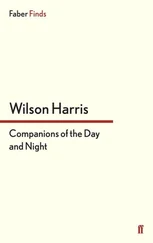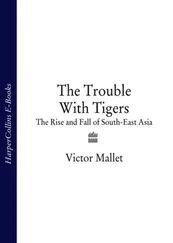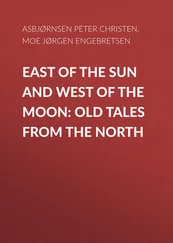Figure 14.2A Silver tetradrachm of Aradus, continuing the types of Alexander the Great (see coin 14.1D), but bearing a palm-tree symbol (an emblem of Aradus) and a Greek monogram of the first two letters of the city’s name, AR. Below the figure of Zeus is a date in Phoenician, “year 30” of the city’s era of independence from the Seleucids (corresponding to 230/229 BCE). This Aradian Alexander coinage was discontinued c. 168/167 BCE in favor of smaller drachms imitating coins of Ephesus (see coin 14.2B).
Figure 14.2B Silver drachm of Aradus, imitating an issue of Ephesus, and dated 169/168 BCE. The obverse depicts a bee and the reverse a stag standing in front of a palm tree, both of which were standard Ephesian types, but in place of an Ephesian magistrate’s name the coin reads “of the Aradians.” These coins circulated in the Levant alongside genuine Ephesian drachms, which were apparently exported to Seleucid Syria from Asia Minor.
Figure 14.2C Silver tetradrachm of Ptolemy II (285–246 BCE), minted at Sidon. Unlike their neighbors and rivals, the Seleucids, whose silver coinage usually bears the portrait of the current ruler, the Ptolemies stressed dynastic continuity through use of the portrait of the dynasty’s founder, Ptolemy I. His portrait appears here, on the coinage of his son and successor Ptolemy II. The reverse type of an eagle was used on almost all Ptolemaic silver coinage, and was employed later at Phoenician mints by the Seleucids after their conquest of these Ptolemaic possessions in the Levant (see coin 14.3B).
Figure 14.2D Silver tetradrachm of Antiochus IV (175–164 BCE), minted at Ptolemais, and using the Attic weight standard. The obverse carries the royal portrait, and the reverse has a standard Seleucid type: Apollo, seated on the Delphic omphalos, holding an arrow and testing
Figure 14.3A Copper-alloy coin of the Seleucid king Antiochus III (223–187 BCE), minted at Antioch. These small, low-value coins, with an obverse head of the god Apollo and a reverse type showing Apollo standing, holding an arrow and testing a bow against the ground, average about 12 mm in diameter and 2 g in weight. They were minted in huge quantities and
Figure 14.3B Silver tetradrachm with the portrait and titles of the Seleucid king Antiochus VII (138–129 BCE), minted at Tyre. This coin, with its characteristic reverse of an eagle standing on a ship’s ram, was issued on the standard employed by the Ptolemies, and used the same basic reverse type as the Ptolemaic coinage (see coin 14.2C).
Figure 14.3C Silver tetradrachm minted at Antioch following the Roman annexation, imitating a late Seleucid issue in the name of Philip Philadelphus (93–83 BCE). These coins continued to bear the portrait, name and titles of the Seleucid king; the only indication of the real authority is the small monogram in front of the seated figure of Zeus on the reverse, thought to read AY ΓΑΒ, an abbreviation in Greek of the name AU(lus) GAB(inius), the Roman governor of Syria, 57–54 BCE.
Figure 14.3D Silver tetradrachm of Augustus (27 BCE–14 CE), minted at Antioch. The obverse bears the portrait of the emperor; the reverse has an image of the Tyche of Antioch seated on a rock and holding a palm branch, with a personification of the river Orontes as a youth swimming at her feet (see coins 14.36 and 14.39 for later examples of the same figurative group).
Figure 14.4A Silver tetradrachm of Nero (54–68 CE), minted at Antioch. Under Nero the tetradrachms of Antioch began to utilize the reverse type of an eagle, which had hitherto been employed by Phoenician mints, especially Tyre (see coins 14.2C and 14.3B).
Figure 14.4B Silver denarius of Septimius Severus (193–211 CE), minted in the Near East, probably at Antioch. The obverse has a portrait of the emperor; the reverse a winged figure of Victory with a victor’s wreath and palm branch.
Figure 14.4C Silver “radiate” or antoninianus of Philip I (244–249 CE), minted at Antioch. The reverse shows a figure of Pax (Peace) with the legend PAX FVNDATA CVM PERSIS, “peace established with the Persians,” a reference to a treaty concluded between the Romans and the Sasanians after a Roman defeat in which the previous emperor, Gordian III (238–244 CE), was killed.
Figure 14.4D Silver tetradrachm of Philip I (244–249 CE), minted at Rome for circulation in Syria. Most of the coinage circulating in Syria was minted locally, but a few issues were produced at mints outside the region. That Rome was the mint for this coinage is apparent from the style, which is exactly like that of contemporary Roman imperial coins of Philip, and the abbreviation MON(eta) VRB(is), “mint of Rome,” beneath the eagle on the reverse.
Figure 14.4E Base silver tetradrachm of the Syrian usurper Uranius Antoninus (c. 253 CE), minted at Emesa. This ruler, known only through his coinage, may have been the last to produce a silver coinage of Greek type in the Near East. The reverse carries the image of an eagle with a wreath in its beak, following the tradition exhibited by coins 14.2C, 14.3B, 14.4A, and 14.4D.
Figure 14.5A Radiate of the eastern usurper Quietus (260 CE), produced at an uncertain mint in the east (Antioch?). The obverse bears a portrait of Quietus; the reverse depicts the goddess Roma.
Figure 14.5B Radiate of Maximianus (286–305 CE). The reverse shows the emperor receiving a figure of Victory from the god Jupiter, with the legend “to Jupiter the preserver of the emperor.” The mint for this coin is conventionally identified as the northern Phoenician city of Tripolis, based on the initials TR; but Tripolis was not a particularly prominent or important city, and TR might stand for Tyre instead.
Figure 14.5C Post-reform radiate of Constantius I, as Caesar (293–305 ce), minted at Antioch. The reverse type is identical to the preceding coin, but the accompanying inscription reads “with the agreement of the army.” At the bottom, the letters ANT identify the mint.
Figure 14.5D Copper-alloy coin of Nerva (96–98 CE), minted at Antioch, with the letters SC in a wreath. The coin does not refer to Antioch in any way, but all the evidence points to the bulk of the so-called SC coinage of the emperors being minted there.
Figure 14.5E Copper-alloy coin of Elagabalus (218–222 CE), minted at Antioch, with the letters SC in a wreath. Although there were later issues of SC coins, those of Elagabalus were the last to be struck in large quantities.
Figure 14.5F Copper-alloy coin minted in Judaea under Tiberius (14–37 CE). These issues bear a date according to the regnal years of Tiberius, year 16 (29/30 CE, not visible on this specimen), which places it during the time of the prefect Pontius Pilate. The obverse shows a ritual ladle ( simpulum ) and reads “of Tiberius Caesar, year 16”; and the reverse bears three ears of corn bound together, with the legend “Julia (Livia, the mother) of Caesar.” The coin does not bear any reference to Pilate, and, in deference to Jewish sensibilities to graven images, avoids imperial portraits in favor of inanimate objects; but some have seen in the depiction of a Roman ritual implement evidence of Pilate’s supposedly antagonistic stance toward Jews.
Figure 14.6A Silver tetradrachm minted at Aradus, dated year 172 of the city’s era (88/87 BCE). The obverse bears a head of a city-goddess; the reverse shows a winged figure of Nike holding an aphlaston (the decorative element of a ship’s stern). The inscription reads “of the Aradians”; the letters on the left-hand side combine Greek and Phoenician letters. The upper line is a number, 182, the year of minting; the function of the others is uncertain but they were probably control marks or initials of officials.
Figure 14.6B Silver tetradrachm minted at Tyre, dated year 99 of the city’s era (28/27 BCE). The obverse bears a head of the Tyrian god Melqart, assimilated to Heracles; and the reverse an eagle standing on a ship’s ram. The inscription in Greek reads “of Tyre, the sacred and inviolate, year 99.” Such coins circulated widely in the southern Levant in the first century BCE and later, until they were supplanted by Antiochene silver coins under the Roman emperor Nero (54–68 CE).
Читать дальше












